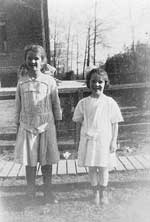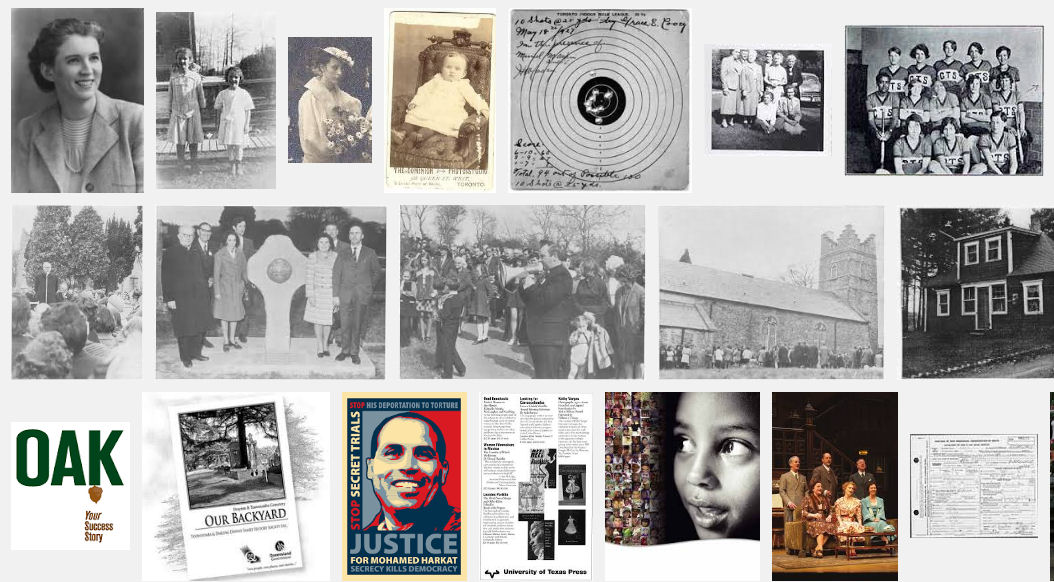Through Grace’s Eyes
A window into the Annex at the start of the 20th century
By Tom G. Kernaghan
“Change your opinions, keep to your principles; change your leaves, keep intact your roots.”
Victor Hugo
Five-year-old Grace Cooey sat on the running board of the Model T Ford, dazed and blinking, her bright green eyes regaining focus on the intersection of Bathurst and Bloor streets, tresses of her sandy-brown hair poking out from under her hat. Having slipped away from her mother, she’d been hit by the Ford, thrown clean over its hood, had bumped the back of the car on her way down before finally landing on the road. Miraculously, the snow, along with Grace’s winter gear, had kept her from harm. Her mother, Susannah, of the Shuter family, was at her side. Her father, Herbert William Cooey, founder of H.W. Cooey Machine & Arms, creator of the Cooey .22 calibre rifle, was busy working at his shop up at Howland and Bridgman avenues.
The year was 1915. Though she could only sense it at the time, Grace was poised on the verge of a new, urban Canada, and a new century for women. As the years passed, Grace would tell this story to many. A symbolic vignette, it conveyed what became her keen awareness of the many changes underway in the world, certainly in her part of it (Toronto’s Annex), and it conveyed the importance of strength of character and endurance, the vital and timeless human qualities inculcated in her by her parents.
Grace Eleanor Cooey was raised on Bathurst hill, on the present site of the Hillcrest Community School playground. Junior to two brothers, Donald and Hubert, she grew to become a woman who was known for her intelligence, resilience, compassion, and, quite fittingly, her graciousness. Known as “Cooey” to those dear to her, the precocious and curious tomboy went on to skip two grades. She entered Central Tech at age 12, and eventually was graduated from U of T. She went on to weather The Great Depression, the Second World War, many personal disappointments, and decades of rapid technological change, all the while embracing the growing ethnic diversity of the city; and extending decency to everyone she met.

In 1929, Herbert moved the firearms plant to Cobourg, and in 1931 Grace finished university, left the Annex, and became a teacher in Galt. Eventually she married and settled in Cobourg; however, the Annex never left her.
Quietly but heroically, she passed away in the summer of 1998. Among the treasures she left behind were two autograph books she’d kept during the 1920s and early 30s. In them were written several sayings. Using person quips, poetry, and insights, her many friends, relatives and teachers immortalized their thoughts and feelings about life and about Grace. In so doing they left a window to their Toronto, and an appreciation for what is timeless.
It was 1929, a year that saw The St. Valentine’s Day Massacre, the first use of penicillin, Faulkner’s Sound and Fury, Leon Trotsky expelled from the U.S.S.R, the formation of Yugoslavia, the first round-the-world dirigible flight (by Zeppelin), the beginning of a global depression, and Hubble’s Law of the expanding universe.…
The date was March 9, 1929. Grace was 18 years old. The Globe and Mail reported a “Bold City Hold-Up,” in which seven local men (some from Euclid and Augusta avenues) and a Buffalo cab driver had held up a church payroll delivery vehicle, and then led police on a high-speed chase to Oakville; the Atwater Kent radio sold for $4.00; the Chrysler DeSoto Six sold for under $1,500.00; the stock market crash that would change history loomed seven months in the distance; and a dear friend of Grace’s wrote:
She who enters Heaven’s gate,
A crown of faith must wear.
Each kindness done in love alone
Will make that crown more fair.
Though faith alone may let us in,
How much more blessed is she
Whose crown, with deeds of love, will shine
Through all eternity.
Your loving friend
Irene Shortread
Grace was my maternal grandmother. Join me in the coming issues as I will reveal more and more about her life. I invite you to visit our liveable neighbourhood, as seen through the eyes of Grace and those whose lives she touched so deeply.
(Gleaner News, Toronto)

